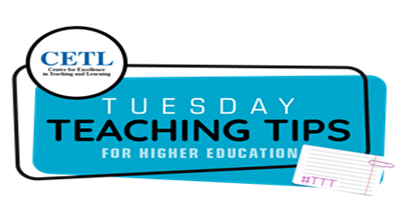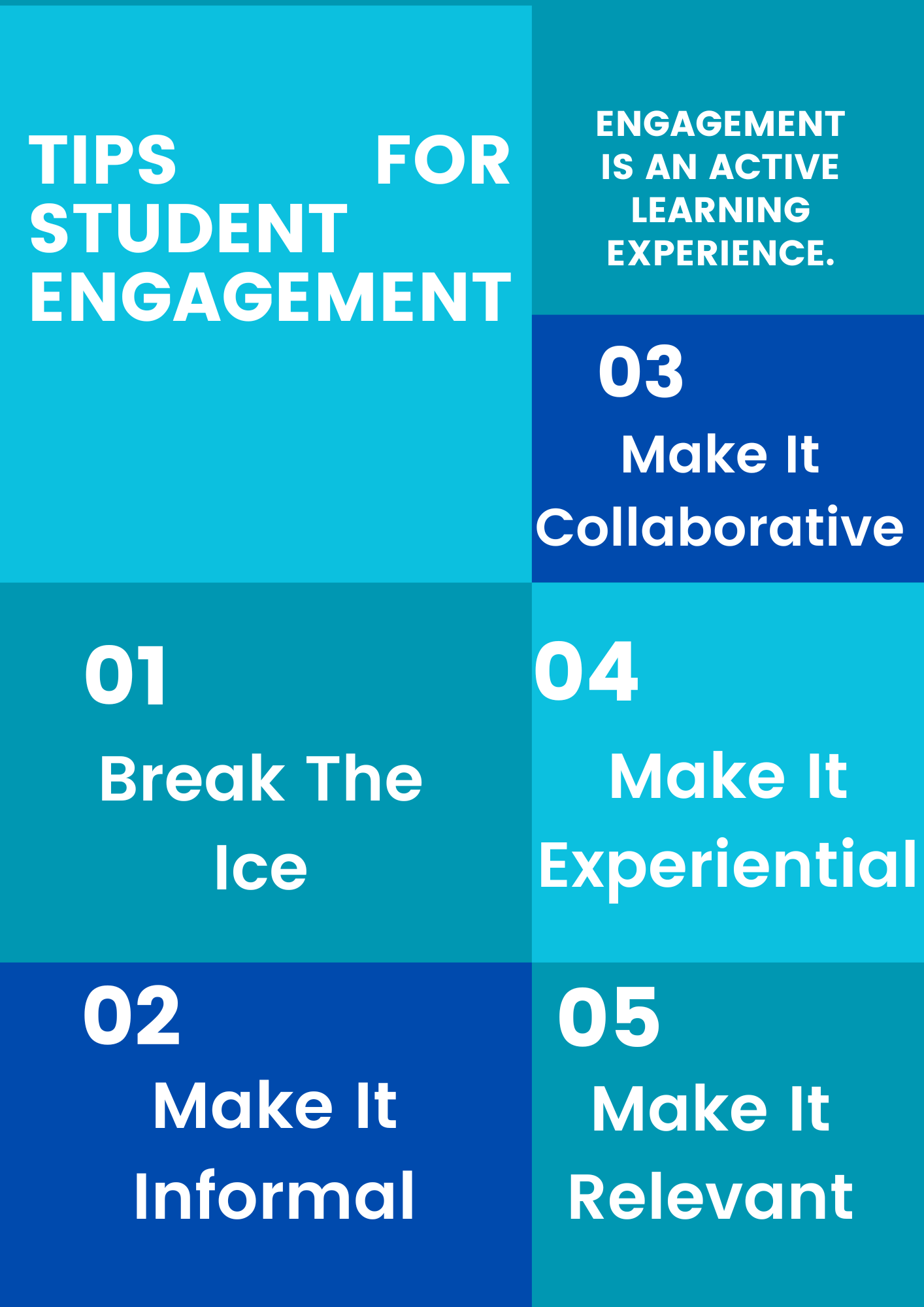 Good day Colleagues,
Good day Colleagues,
We hope all is well as you continue to navigate through the semester with excellence in teaching and learning. The transitions from face-to-face to blended or online modes of delivery require several paradigm shifts. In an online/blended learning context for example, students encounter many challenges regarding their engagement caused by the absence of physical contact and social interaction, and an increasing number of distractions from other media (other applications and devices) competing for their attention. In a face-to-face learning context, these distractions may still exist via mobile devices for example. In extreme cases, a lack of engagement may also result in contentious and/or disruptive class behaviours. It is therefore important that you become well aware and equipped with the ways in which this can be mitigated and maximize engagement. A high level of engagement makes learning more impactful and increases retention.
A – What is Student Engagement?
Engagement may be defined as an active learning experience that requires learners to be attentive and not just in attendance. Ideally, this requires a high level of attention, commitment and motivation from the learner. By taking an active/participatory approach to your instruction, you can help facilitate the students’ engagement and learning. Taking such an approach ensures that the student is more of an active participant and less of a passive recipient of knowledge. This of course, is applicable to a face-to-face, online or blended teaching and learning context.
B – Tips For Student Engagement
The following are some tips you may consider for engaging your students in your teaching and learning context. These tips can be applied throughout your course (plenaries, tutorial sessions etc):
-
Break The Ice – More than just an attention-grabber, an ice-breaker is an activity that helps to set the tone of your synchronous and/or asynchronous course activities whether it is in a face-to-face, blended or online context. For example, you may create an activity that allows students to introduce themselves at the beginning of the course/session via an asynchronous discussion forum (in myelearning) or in a synchronous discussion. Moreover, an ice-breaker may function as a bridge-in that allows you to segue into/introduce the topic of your lesson. To this end, you may start the class/module via an introductory video, displaying statistics on a particular phenomenon, a news report, or an excerpt.
-
Make it Informal – Research has shown that learning is maximized in an informal context/setting. An informal approach may take the form of an open class discussion, story-telling, role-playing and may even include some form of comedy-relief or humour among you and your students. Such an approach allows students to feel comfortable, let their guards down and may often help them learn without being aware of it. Additionally, it aids in retention.
-
Make it Collaborative – A collaborative approach allows students to work in teams on problems and projects under conditions that assure both positive interdependence and individual accountability. This active learning approach may take the form of Think-Pair-Share, Problem-Based, Inquiry-Based or Web-Quest activities. These allow students to work together in brainstorming and exploring solutions to problems which they present/communicate to others in the class. These activities may be synchronous or asynchronous in any mode of delivery. In an online context for example, you may consider using breakout rooms in Zoom where students can work in groups before sharing with the entire class. For the latter (asynchronous activities), you may consider using discussion fora which can be assigned to individual groups in myeLearning. Through a collaborative approach, students develop social, communication and IT skills, which are facets of the distinctive UWI graduate.
-
Make it Experiential – Learning by doing. More than just a hands-on approach to teaching and learning, this method takes students through a process of trial and error, critical thinking and discovery. An experiential approach may take different forms such as simulations, role-playing, and student demonstrations in a synchronous and/or asynchronous teaching and learning context in any mode of delivery. For example, you may instruct students to illustrate or demonstrate a simple chemical reaction, process or activity such as a musical arrangement, animal anatomy/physiology, land-forms or simple soil erosion, which they can pre-record or illustrate/demonstrate live. Whatever form it may take, an experiential approach typically uses the following process: experience => reflection => conceptualization => experimentation.
-
Make it Relevant – Teaching and learning are closely affiliated with specific contexts. For example, you or your learners may remember an event primarily because of the context (or circumstances) surrounding that event. Likewise, teaching and learning is context-specific even in a remote/online environment. To maximize engagement, try to use contemporary examples and materials where applicable. To this end, you may consider incorporating activities, case studies and materials that refer to the ongoing endemic. For example, you may instruct students to explore the impact of the ongoing endemic on the local or global economy or health sector, or the impact of recent natural disasters on the need for disaster preparedness in developing countries. Relevant materials and activities become more meaningful to students because they are already immersed in and/or can relate to the affiliated phenomena. As such, it increases motivation and retention as well as participation and engagement among your learners.
The following are additional resources you may find useful in maximizing engagement in your educational contexts. They include archived CETL webinar recordings and tip-sheets on using technology features for student engagement:
-
Creating H5P for Interactive Learning Activities – CETL Archived Webinar Recording
-
2021 UWI/Guardian Group Premium Open Lecture
-
The 2021 UWI/Guardian Group Conversations
-
The 2024 UWI/Guardian Group Conversations – The AI in Education Era
-
The 2024 UWI/Guardian Group Open Lecture – The AI in Education Era

